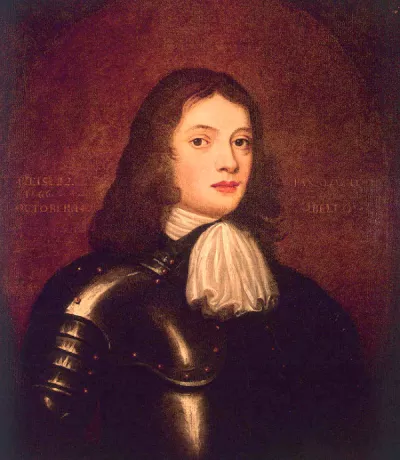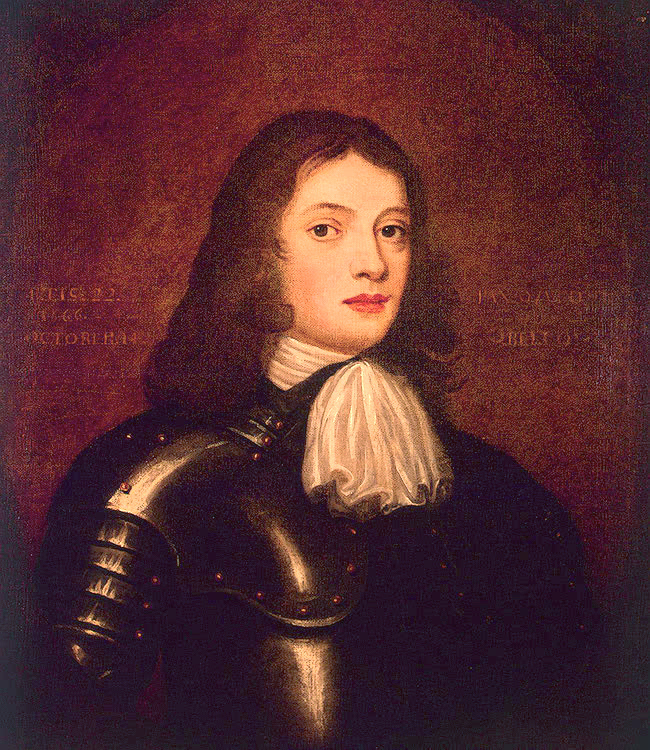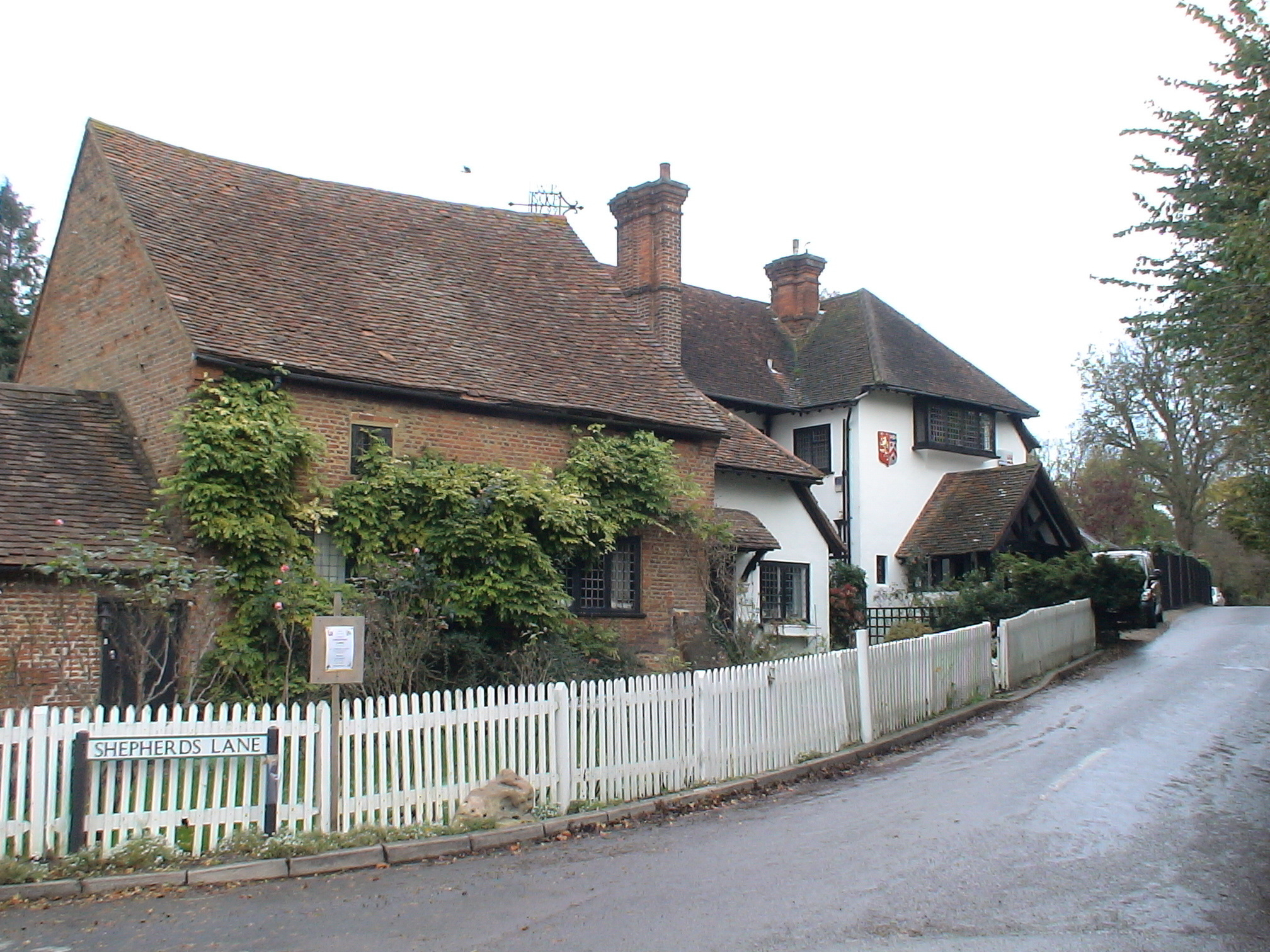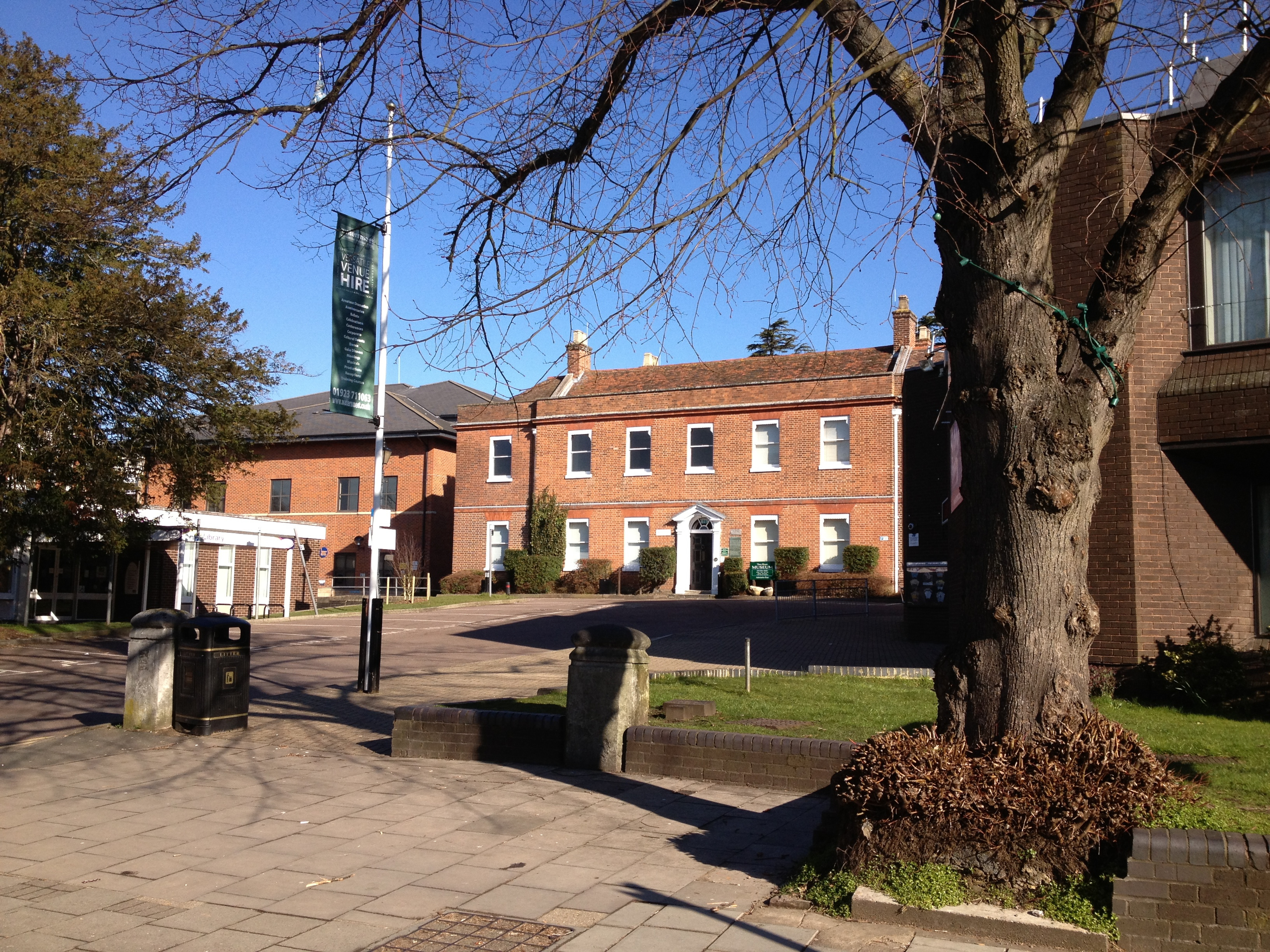William Penn and the Rickmansworth connection
An article marking 300 years since his death

On a plaque outside Basing House in Rickmansworth, which is now the home of the Three Rivers Museum Trust, are the words.
'HERE WILLIAM PENN (1644 – 1718) QUAKER STATESMAN, MAN OF VISION, FOUNDER OF PENNSYLVANIA AND PLANNER OF PHILADELPHIA. FRIEND OF THE INDIANS, CRUSADER FOR RELIGIOUS LIBERTY, DESIGNER OF EUROPEAN PEACE, RESIDED FOR 5 YEARS AFTER HIS MARRIAGE TO GULIELMA MARIA SPRINGETT (1644-1694)'

William Penn 1666
William Penn was born in 1644, the son of a naval captain. The first year of his life was spent in cheap lodgings on Tower Hill in London. In 1648 the young boy developed smallpox and to aid his recovery the family moved into the country, living at Wanstead in Essex.
William’s first education was in a school at Chigwell where the headmaster saw that ‘the buds of virtue were stirred up’ and William learned the ‘three Rs’, Greek and Latin. In 1654 Penn’s father, Sir William Penn, was sent on an expedition to San Domingo, but when this was a failure he was dismissed from all his commands.
William had a religious experience at the age of 11 which he never forgot, and which left him convinced that he was dedicated to a holy life. In 1654 the family moved to Macroom in Ireland, and it was here that they first met the Quakers. Thomas Loe, a noted Quaker preacher, was invited to Macroom by Sir William and impressed the whole family with his preaching, although none of them were then converted.
At the Restoration of the monarchy in 1660, Penn was sent to Oxford and was in trouble with the college authorities for attending private religious meetings rather than going to the elaborate ceremonies in the chapel. In 1661 he was sent down ‘for writing a book which the priests and masters at the college did not like’ and his father sent him on the ‘Grand Tour’ to complete his education.
In France he was taught by the theologian Moise Amyraut, whose sentence “The laws of God are everywhere printed on the heart of man who is himself their true commentary” must have appealed to Penn. In 1664 Amyraut died and Penn went on to Italy but he was recalled by his father. He then studied law in London, apart from an interlude spent as courier to his father who was now Grand Captain Commander of the Fleet. There is a record of Penn’s baptism in the church records of All Hallows by the Tower, London, for 23 October 1664.
After the Plague of 1665, William was sent to manage his father’s Irish estates. Here he again heard Thomas Loe preach and attended meetings of the Society of Friends (Quakers) regularly, being once sent to prison for it. As a result of this he was recalled to London by his father and when he refused to give up the Friends, he was disinherited. He spent the next months among the Friends in Buckinghamshire, preaching and writing, and it was at this time that he met Gulielma Springett.
In 1670 Penn and William Mead were arrested and accused of preaching before a gathering in the street, which Penn had deliberately provoked to test the validity of the 1664 Conventicle Act which forbade religious assemblies of more than five people outside the auspices of the Church of England. At the trial the jury found the two "guilty of speaking in Gracechurch Street" but refused to add "to an unlawful assembly". The infuriated judge charged the jury that they "shall not be dismissed until we have a verdict that the court will accept". The members of the jury, fighting their case from prison in what became known as Bushels Case, managed to win the right for all English juries to be free from the control of judges. This case was one of the more important trials that shaped the concept of jury nullification and was a victory for the use of the writ of habeas corpus as a means of freeing those unlawfully detained. While Penn was in prison his father fell ill, and he died before Penn was released. During his illness he wrote a new will, making William his chief heir, and thus Penn was now a rich man.
In 1671 Penn made a missionary tour to Germany and Holland. On his return to England arrangements were made for his marriage to Gulielma, A house was taken in Rickmansworth, and on 4 April 1672 they were married at King's (now King John's) Farm, close to the junction of Shepherds Lane with Berry Lane and Stag Lane in Chorleywood.

King John's Farm is the white house
During his years at Rickmansworth, Penn continued preaching, and his home was used to accommodate many other famous preachers on their travels, notably George Fox, the founder of the Society of Friends. In the mid-1670s persecution of all non-conformists began again, and many Friends thought of emigrating to America to find security. Penn gave much thought to this, one American writer has called Rickmansworth ‘the cradle of the Commonwealth of Pennsylvania’.
In 1677 the Penns moved to Worminghurst in Sussex where Gulielma had inherited an estate and the next few years were spent in preaching and writing. Another year was spent on a missionary journey to the Continent but all the time the idea of a settlement in America was growing.
In 1681, King Charles II handed over a large piece of his American land holdings to Penn to appease the debts the king owed to Penns father, Sir William,
Penn immediately set sail and took his first step on American soil at New Castle in 1682. After his trans Atlantic journey Penn journeyed up the Delaware River and founded Philadelphia. The land included present-day Pennsylvania and Delaware. Penn himself had wished to name the territory Sylvania but the King insisted on adding Penn’s name to make it Pennsylvania.
Penn was the owner and governor of this new state, with the power to make laws, and he drafted its constitution; it was one of the best and most reasonable ever. The first provision was of complete religious freedom to all men believing in one God. Throughout the constitution the liberties of man were stressed, the Indians and the settlers being treated as equals. The democratic principles that he set forth in the Pennsylvania Frame of Government served as an inspiration for the United States Constitution. He developed a forward-looking project for a United States of Europe through the creation of a European Assembly made of deputies that could discuss and adjudicate controversies peacefully. He is therefore considered the very first thinker to suggest the creation of a European Parliament.
The constitution of Pennsylvania attracted many to the state and especially appealed to the Friends. In 1684, after seeing Pennsylvania well established, Penn returned to England from which he had heard stories of the savage persecution of the Friends. Five months after his return, Charles II died. Penn had much more influence with his successor, James II. He was able to secure the release of 1,200 Friends from prison, and did what he could to lessen the severity of the trials following the rebellion of the Duke of Monmouth, once Penn’s neighbour at Rickmansworth.
At this time there was trouble in Pennsylvania, since the principles of Penn’s governorship did not always suit the merchants who had gone there to trade and who did not always acknowledge his authority. Further difficulties arose over the necessity of arming the colony for, although the times were troubled, it was against Quaker principles to carry arms or use violence. In 1692 Penn was dismissed from the governorship, probably due to the intrigues against him at the court in London. In December of that year, however, he insisted on a hearing of these charges in full court before the King, and was publicly cleared.
In 1693 his wife, Gulielma, died leaving him two sons and a daughter. The governorship of Pennsylvania was restored to Penn in August 1694. Three years after the death of his first wife he married Hannah Callowhill at the Friend’s Meeting House in Bristol. Penn died on 30 July 1718 and lies buried beside his wives at the Friends Meeting House at Jordans near Beaconsfield.
HISTORICAL NOTE: It is a fact that William Penn lived at Rickmansworth. The present Basing House was built in 1740 and it is possible that part of the house in which William Penn lived is incorporated in the present building. Although documentary evidence is scarce, the American Friends of William Penn felt that this historical event merited a commemorative plaque which they erected in the wall by the entrance to Basing House where it can be seen by visitors to the Museum.

Basing House
Article taken as a basis from the pamphlet available in the museum with added content from wikipedia.
A short audio summary of Penn's life is here.